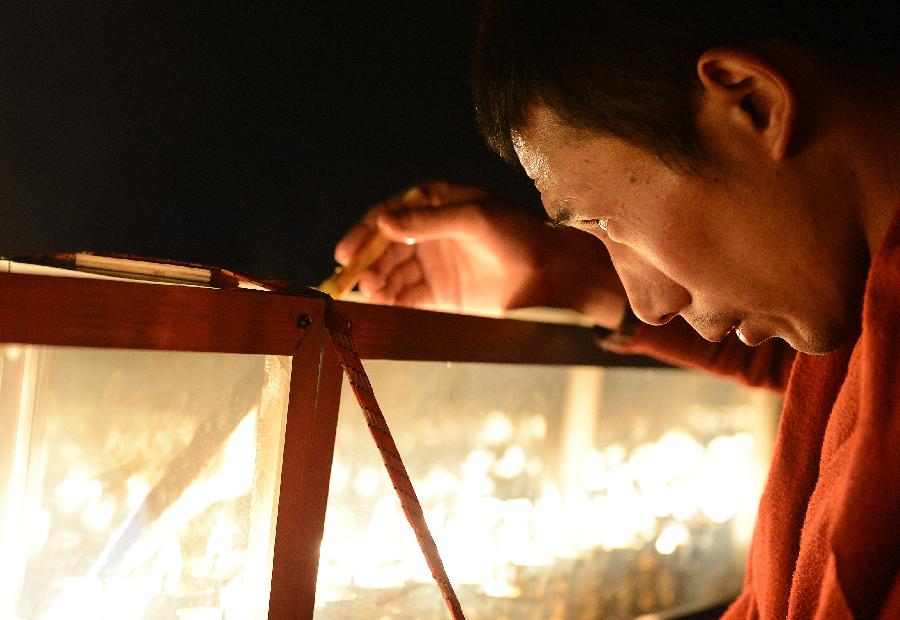 |
|
A monk lights a butter lamp on the roof of the Jokhang Temple on the Butter Lamp Day, a festival to commemorates Tsong Khapa, a master of Tibetan Buddhism, in Lhasa, capital of Southwest China's Tibet autonomous region, Dec 16, 2014. [Photo/Xinhua]
|
The Butter Lamp Festival falls on January 15th of the Tibetan calendar.
The festival, or Chunga Choepa in Tibetan, was established in 1409 by Tsong Khapa to celebrate the victory of Sakyamuni against heretics in a religious debate. In his dream, all beautiful flowers and trees appeared in front of the Buddha. So he commissioned monks to make flowers and trees with colored butter. This tradition has been maintained to this day.
On this day, the Barkhor Square in Lhasa turns into a grand exhibit site for various giant butter and tsampa sculptures. They take the form of auspicious symbols and figures, such as flowers, birds, and animals. Large-scale butter sculptures depicting stories of Buddha, Princess Wencheng - many with scaffoldings of several floors high - are erected at many monasteries, with thousands of lamps made of butter hung on them.
During the daytime, the street is crowded with people, paying homage to the Buddha by turning prayer wheels in their hands.
By nightfall, the street is brightly lit with thousands of lamps made of butter in an intriguing assortment of designs. The lamp show lasts all night. People keep singing and dancing in great joy to pray for blessings throughout the fantastic night.
